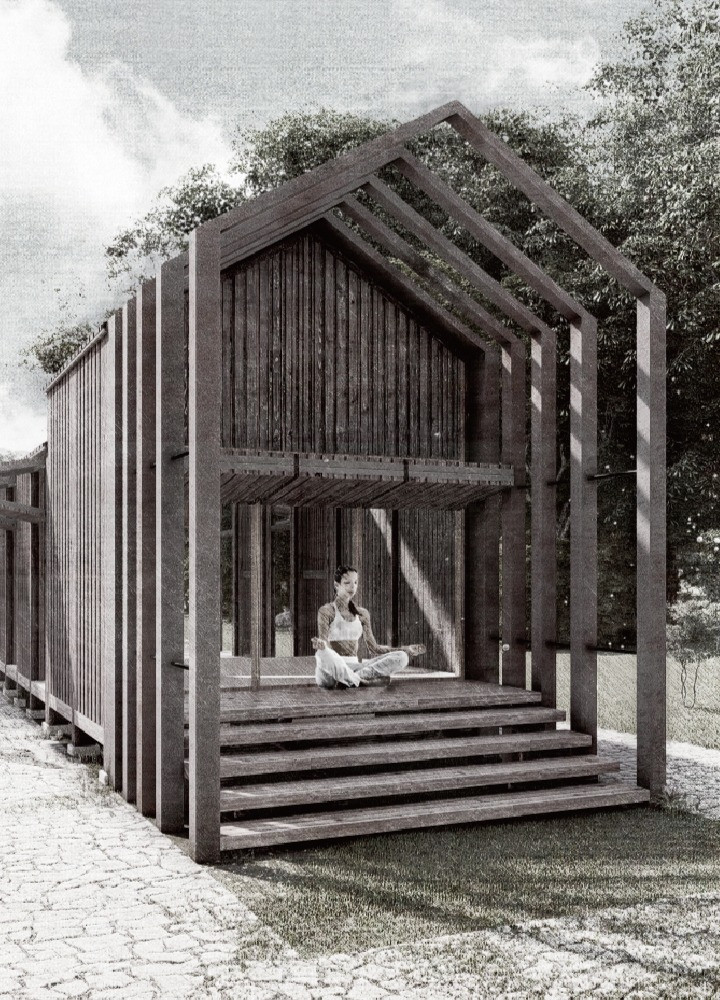5 key facts about this project
The function of the cabin is multifaceted, primarily serving as a dedicated space for meditation and personal reflection. It features a rectangular layout subdivided into a meditation room and a communal area, both designed to facilitate various forms of individual and group meditation practices. The architecture allows users to disconnect from the noise of daily life and reconnect with their inner selves amidst nature.
The cabin’s design incorporates several key elements that enhance its function and connection to the environment. Vertical windows feature prominently, facilitating a nonlinear interaction between the interior space and the surrounding landscape. These windows allow natural light to penetrate deeply into the interior while providing users with expansive views of the adjacent trees, gradually easing the transition into meditation.
Materiality plays a crucial role in this project, with an emphasis on sustainable and locally sourced materials. The use of charred cedar wood for the exterior not only adds a protective layer against the elements but also creates a visually appealing texture that blends seamlessly with the landscape. Iron frames are deliberately allowed to rust, incorporating a dynamic element into the design that reflects the passage of time. Stone flooring throughout the pathways further enhances the sensory experience, creating an immediate connection between users and the natural setting.
The unique aspect of "Transition to Meditation" lies in its duality of purpose and responsiveness to its environment. While many architectural projects focus solely on aesthetics or functionality, this design skillfully merges the two, encouraging users to actively engage with both the interior and exterior spaces. Additionally, the thoughtful considerations of light and ventilation contribute to a comfortable, adaptable atmosphere for meditation.
In examining "Transition to Meditation," the intricate balance between architectural forms and environmental context is evident. Elements such as meticulous space planning, material selection, and integrated lighting shape the user experience, making this project a noteworthy exploration of architecture's role in promoting mindfulness. Readers are encouraged to delve deeper into aspects such as architectural plans, architectural sections, and architectural designs to fully grasp the innovative approaches and detailed concepts behind this thoughtful project.


























